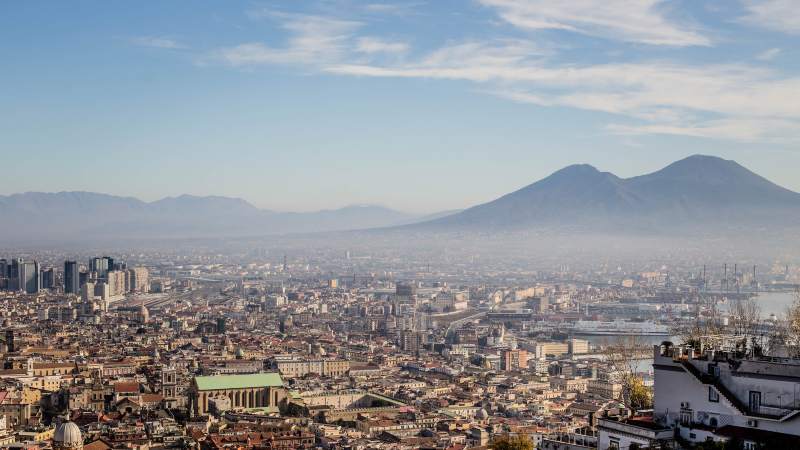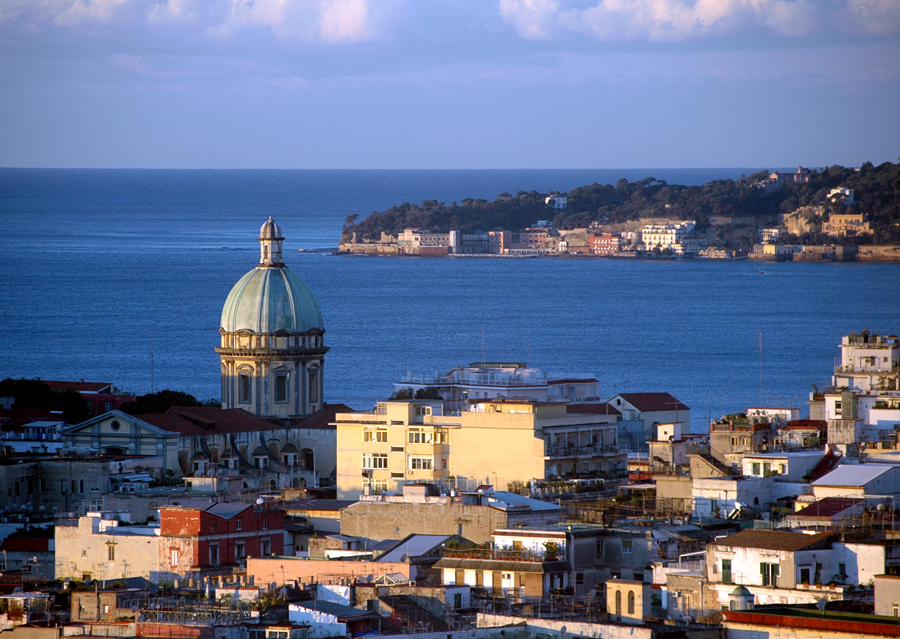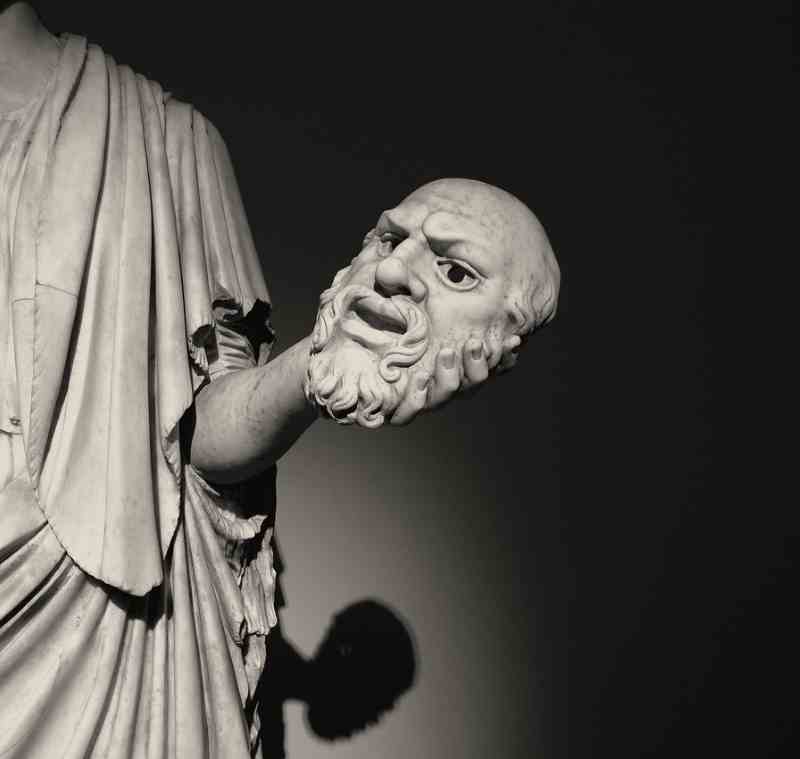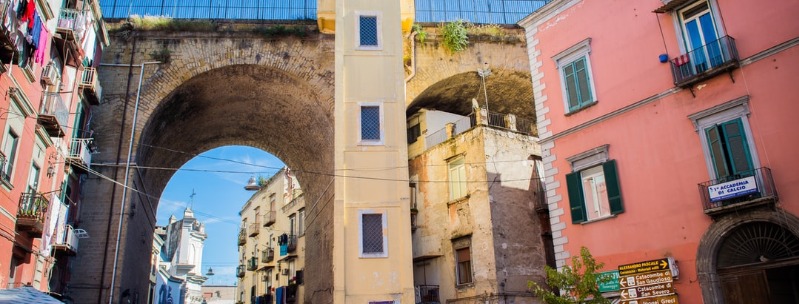Best Things to Do in Naples, Italy
Naples, known as the city of the sun, is a capital full of charm, energy, and mystery that preserves with pride its handicraft, musical, theatrical, and gastronomic traditions.
In the ex-Capital of the Kingdom of the Two Sicilies, you can still find 2700 years of history, beginning from the Greek boundaries and from the Roman amphitheater up to the noble buildings built when Naples was the center of the world, as well as the ultramodern “subway of the art” that is the most beautiful of the world for the New York Times.

For all that Naples, since the past centuries has been one of the principal tourist destinations and Goethe wrote the sentence “you see Naples and then you die.”
In this regard the Neapolitans say that they never stop to be surprised while walking for the roads of the city, therefore, is evident that to choose among so many beauties that the Capital has been producing for 3000 years is an ungrateful assignment.
Slow tourism in the Naples region
Nowadays, life just goes too fast. How often have you found yourself wondering “how is it Thursday already?” We are sure you would not want to feel the same way or for this stress to find its way into your holidays. Rushing from one place to the next without enjoying the relaxation that should come with a long holiday abroad is probably the worst thing that can happen! This is why we would like to talk today about Slow Tourism in Italy.

In the last few years many people have been renting cottages in Italy and enjoying what the local regions can offer: local food, sustainable activities, exploration of the surrounding areas… all with the idea in mind of using what is local and green, and enjoying the small things in life that can at times bring the most pleasure.
From this trend the Slow Tourism phenomenon was born. Slow tourism focuses, amongst other goals, on naturalistic and environmental elements, on improving accessibility while respecting the environment and avoiding excessive pollution, on visiting and promoting rural areas and eco-tourism projects. It is for this reason that Italian villa holidays have become popular with followers of this Slow Tourism movement.
The Naples region has many beautiful small towns and villages that frequently embrace tourists and visitors who stay not only on Amalfi coast villas but also on other properties throughout the region. While staying in this region, we recommend visiting the rests of the Roman settlements that were famously covered by the Vesuvius as well as the charming coastal towns where you can enjoy fish caught that day as well as other local delicacies produced in the region. Remember to visit the famous cave sights that will take your breath away – we recommend Grotta dello Smeraldo in Conca dei Marini, just four kilometres from Amalfi!
Naples Day 1
By virtue of the circumstance that the largest part of the travelers has only 4 or 5 days, I have prepared an ideal itinerary that takes into account the little time at your disposal.
Metro Toledo/piaza Amedeo / piazza San Pasquale / piazza Sannazaro- Mergellina Quartieri San Ferdinando, Santa Lucia, Chiaja.
Zevallos Stigliano
Cross via Toledo and go to visit the building Zevallos Stigliano, where among other things, it is possible to admire the Martirio Sant’Orsola by Caravaggio.
Real Teatro San Carlo
After that continue to walk up to the gallery Umberto I and to the Real Teatro San Carlo (if there is an occasion, try to assist to a play or a concert, otherwise, it is worth visiting the most ancient and beautiful modern theater of the world. The ticket is of € 4.
Always in this zone, you need to make a pair of culinary stops to taste a Sfogliatella or a “Babà” at Sfogliatella Mary or at Pintauro.
It is also inevitable to take a coffee at Caffè del Professore or at Gambrinus, a Café with statues and very elegant paintings, as well as works of Filippo Tommaso Marinetti and Gabriele D’Annunzio.
Fountain Del Carciofo
From the Gambrinus, you can perfectly see the fountain Del Carciofo in the center of the Piazza Trieste e Trento, as well as the Church of St. Ferdinando, where the sovereigns were once crowned, while today is known to be the Church of the artists.
Plebiscito Square
Just to the side, there is the famous Plebiscito square with the Church of San Francesco di Paola and the royal building with its statues.
Castello Nuovo
After having visited the royal building follows its perimeter up to the national library and go to see the Castello Nuovo ( Maschio Angioino) that dominates the Aragonese Triumphal arch.
Piazza Municipio
From the aforesaid castle, it is possible to immediately arrive in Piazza Municipio, where you can visit the Church of St. Giacomo of the Spaniards and the recently installed fountain of the Neptune.
Finally, after having seen so many monuments from the inside, it is the moment to relax on the waterfront crossing via Partenope and via Caracciolo.
The waterfront offers, in fact, a sight of unbelievable beauty. On one side the Vesuvius, from the other the district of Posillipo. Enjoy the sight walking through Santa Lucia, Mergellina, and piazza Sannazaro.
Castel dell’Ovo
The Castel dell’Ovo (Egg Castle) is called this way because, according to the legend, Virgilio hid here an egg on which depends the destiny of the city, who will find it will become the owner of Naples.
Here it is very pleasant to have lunch in a typical Trattoria, eat fish or a pizza while enjoying the panorama.
It is also worth walking through the gardens of the Villa Reale, where you can visit the zoological station Anton Dohrn and Villa Pignatelli, a neoclassic villa that has been just restored.
Chiaia
You can now leave the sea to discover the chicest district in the city, Chiaia, full of little shops and boutiques of luxury.
Then continue toward Piazza dei Martiri, via Filangieri, via Chiaja with its bridge, Piazza Amedeo, the park Margherita and up to Corso Vittorio Emanuele.
At Corso, there is also one of the castles of Lamont Young, an English genius that designs it.
Optional
And if you have still time, not forget to visit the Tunnel Borbonico via Domenico Morelli.
B The park Vergiliano in Piazza Sannazaro with the graves of Virgilio and Leopardi from which you can enjoy a stupendous sight o the city.
Naples Day 2
Tired after the first day? I really hope no, because today is even faster. Today you’ll visit the historical center of Naples, the widest area of the world to be protected by Unesco.
- Subway stops: Piazza Borsa / Piazza Dante / Piazza Duomo
- Funicular: viaToledo / Montesanto
Leave Piazza Bovio and let’s explore the historical center. Naples is the city in the world with more Churches (more than 500) and the majority of them are located in this district. The noble tried to buy a place in heaven financing the construction of religious buildings.
Churches in Naples Italy
- Sant’Anna dei Lombardi, in front of the Monteoliveto ‘s fountain, with the chapel of the Vasari.
- The Chiesa del Gesù with the homonym square and the obelisk of the immaculate conception. Here, besides, is buried St. Giuseppe Moscati , the medical Saint to which the grad students bring their thesis;
- The Church of Santa Chiara with its very famous cloister. Here are buried Salvo D’Acquisto, as well as the last kings of Naples Francis II of Borbone and Queen Maria Sofia.
- The Convent of St. Domenico Maggiore, where St. Tommaso D’Aquino and Giordano Bruno lived and in which are often prepared interesting shows
- St. Paolo Maggiore in Piazza St. Gaetano, the burial place of Gaetano Thiene, known as Saint Cajetan, founder of the Order of Clerics Regular.
- St. Giovanni a Carbonara, the name carbonara (meaning “coal-carrier”) was given to this site allocated for the collection and burning of refuse outside the city walls in the Middle Ages.
- St. Giovanni Maggiore, there are a number of founding legends for the church. One is that emperor Constantine I founded the church in gratitude for the rescue of his daughter Costanza from a shipwreck. It may have been built or introduced into a pre-existing pagan temple dedicated to the cult of Hercules or Hadrian.
- The Cathedral of St. Gennaro, the main church of Naples, and the seat of the Archbishop of Naples. It is widely known as the Cattedrale di San Gennaro, in honor of San Gennaro, the city’s patron saint.
The ancient center in Naples is the true heart of the city. Here you can admire and Greek walls and the statue of the god Nile note as “the body in Naples” because here there was the district of the Egyptian immigrants.
But also St. Gregorio Armeno, the street of the mangers and the craftsmanship, as well as via dei Tribunali with its historical pizzerias.
Chapel of St. Severo
A passionate suggestion, enter to visit the chapel of St. Severo wanted by the alchemist Prince Raimondo di Sangro. You will find unreal sculptures and, particularly, the Cristo Velato by Giuseppe Sanmartino, a statue that leaves amazed whoever observes it.
Pio Monte de la Misericordia
Visit the delicious Pio Monte de la Misericordia located at the side of the obelisk of the Cathedral. Among other things, here you will also find the work of Caravaggio.
Here, this is more or less the historical center in Naples, although there is still so much to see. If you have more time, there are another million things you could see.
More to do
- Enjoy the sunset in front of the obelisk of Piazza San Domenico.
- Explore the underground of Naples.
- Visit the library of the Girolamini.
- The ancient Pharmacy degli Incurabili.
- Palazzo Venezia.
- The Castel Capuano.
- The churches of Saint Catalina a Formiello, Sant’Agostino alla Zecca, and San Lorenzo.
- The museum of mineralogy, that of paleontology with the dinosaurs, or cross via Duomo with its 7 museums.
Naples Day 3
Subway: Piazza Cavour / Museo
National Archaeological Museum
It’s essential to visit the National Archaeological Museum, the most important in the world regarding the Roman world (Pompeii, Ercolano and of other Vesuvian towns), as well as for the collections Farnese and Egyptian.

Posillipo
Go back in via Toledo waiting for the bus that will bring you to Posillipo, from which you’ll enjoy one of the most beautiful sights of Naples and the quiet of the place will separate you from the rest of the city.
Posillipo in Greek means “place that eliminates pain” for its beauty and its peace. Walk toward Palazzo D’Anna and book a visit to the archaeological park of the Gaiola, the bay of Trentaremi and the fantastic (suspended on a peak on the sea) Roman theater.
If the time is beautiful, it is possible to do snorkeling or kayaking, explore the coast up to “Marechiaro” or to the island of Nisida.
Naples Day 4
Subway : Piazza Vanvitelli
Funicular: from Chiaja / from via Toledo / from Montesanto
Vomero
Up to the hilly district of the Vomero, where you can walk through via Scarlatti and park Floridiana, but mainly visit the zone of San Martino with the castle dell’Elmo and the beautiful Certosa di San Martino.
Pedamentina a San Martino
From here you’ll be able not to take the subway. If you want, you can go down for the staircases of the “Pedamentina a San Martino” and discover another hidden angle of Naples with houses that are in peace as if they were located in a country area. Just 10 minutes and you’ll reach Corso Vittorio Emanuele.
Capodimonte
Cross the Spanish districts and arrive at one of the stops of the tourist bus that will bring you to the palace of Capodimonte. The stops are in front of the theater St. Carlo, in Piazza Municipio and Piazza Cavour. Or you can take the public bus in Piazza Dante.
The palace of Capodimonte is fantastic both for the wood and for its collection of art. Together with the archaeological museum, that of Capodimonte is one of the most important museums of the world and it is famous particularly for the Farnese collection.
You can see the little halls in Pompeian style, mosaics taken by the excavations of Ercolano, and pictures of painters as Caravaggio, Mattia Preti, Luca Giordano and others.
Optional
Always at Capodimonte, it is possible to visit the catacombs of St. Gennaro. The access is near the “Piccola St. Pietro.”
It is worthy.
Do you still have another day?
Naples Day 5!
From the archaeological museum (Piazza Cavour) or from Capodimonte you can easily arrive in a very popular district rich in history: the Sanità. In this district, it is opportune to be accompanied by a guide that can explain all the mysteries that this neighborhood hosts.
Ferdinando Sanfelice building
The Spaniard’s building, the Ferdinando Sanfelice building, the cemetery of the Fontanelle where are preserved the skulls of the XVII century.
Catacombs of St. Gennaro
The catacombs of St. Gennaro and San Gaudioso with the Chiesa di Santa Maria alla Sanità, in fact, are some of the particularities of this district.
Before I have written that Naples has the most beautiful subway in the world. Correct?
Here, the most beautiful stops according to me:
- The stop of viaToledo.
- The stop of the Università/Piazza Borsa or Bovio.
- The stop of the Stazione Centrale.
- The stop of via Salvator Rosa.
In all the stops of the subway is possible to admire various works of art!
Pompeii artifacts in Naples Museum
“Memories of the Blue Vase“, devoted to that unique piece discovered in 1837 at Pompeii and realized like a cameo. With the incision of the white glassy layer overlapped to draw shoots of grape and harvesting scenes.
“Centaurs” it shows instead a couple of silver Schiphi also recovered at Pompeii, together with other twelve objects of the same metal, in the house that would have been called “of the silverware.”
These cups are the better-preserved samples among the other cups worked with the same technique hosted in the Museum. For their brittleness (the silver foil is sensitive to the variations of temperature between day and night) they are secured in a climate-controlled environment.
